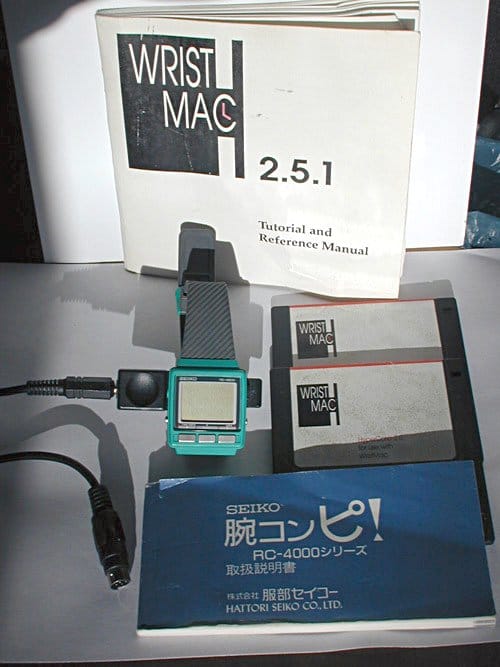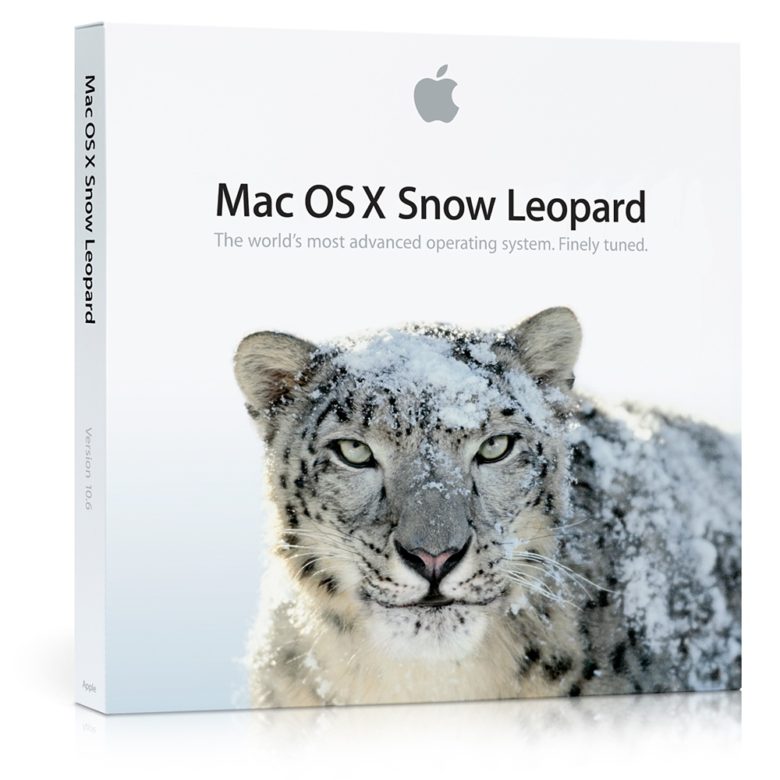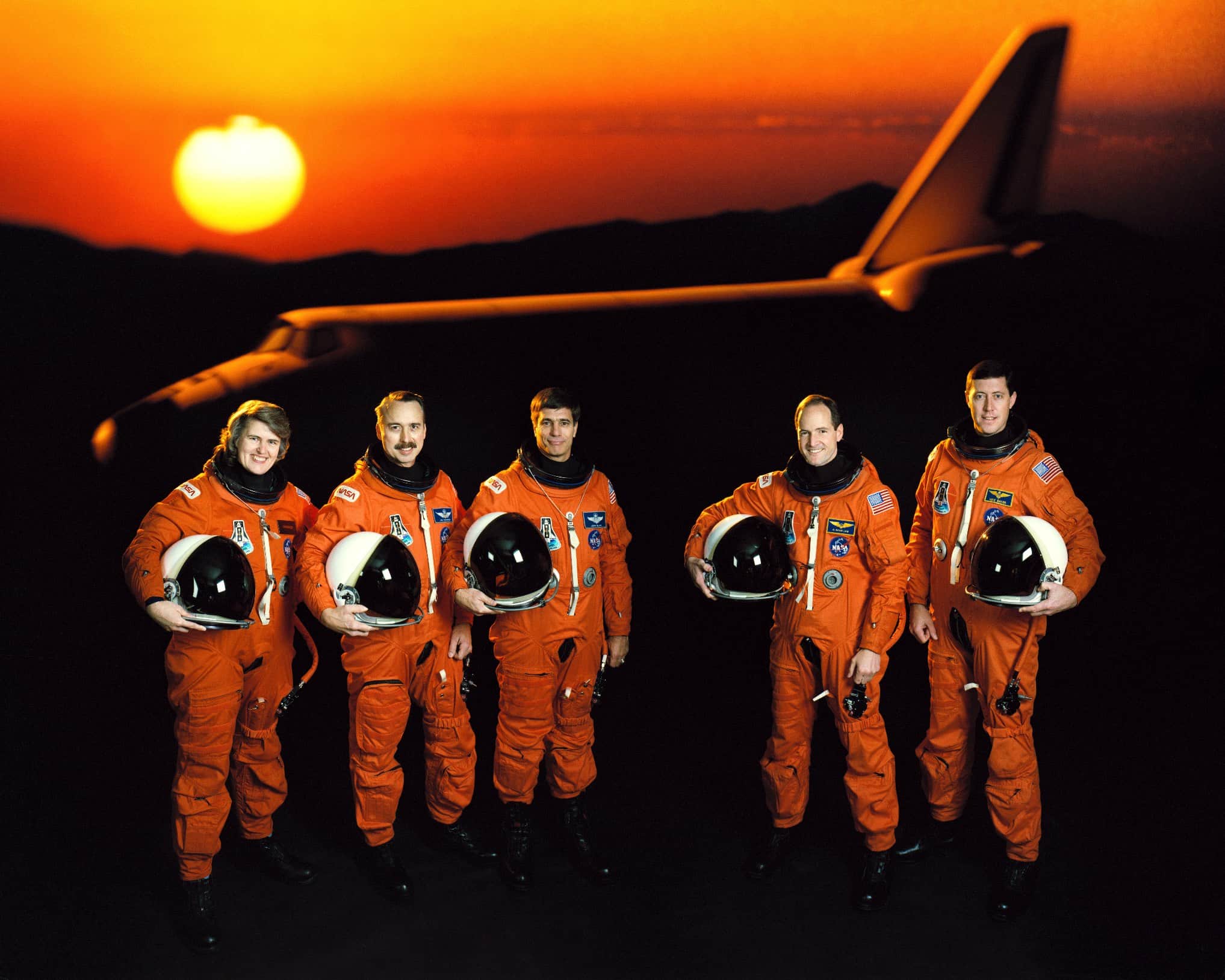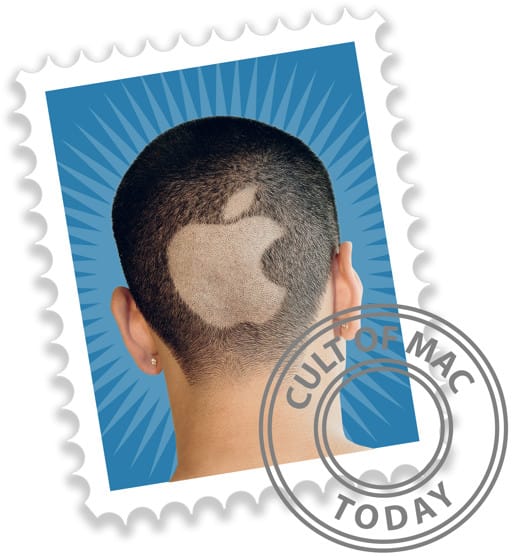 August 28, 1991: Astronauts send the first email from space using a Macintosh Portable and AppleLink software.
August 28, 1991: Astronauts send the first email from space using a Macintosh Portable and AppleLink software.
Sent by the crew of the Atlantis space shuttle, the message reads, “Hello Earth! Greetings from the STS-43 Crew. This is the first AppleLink from space. Having a GREAT time, wish you were here,…send cryo and RCS! Hasta la vista, baby,…we’ll be back!”
First email from space, sent from a Macintosh Portable
The primary task of the STS-43 shuttle mission was to deploy a Tracking and Data Relay Satellite, or TDRS, used by NASA to “provide near-constant communication links between the ground and orbiting satellites.”
The shuttle also carried a Macintosh Portable, Apple’s first explicitly mobile device. (The 15.8-pound, battery-powered computer launched a couple of years earlier in 1989). Surprisingly, the Mac Portable only required slight modifications to function in space. During the flight, the shuttle crew tested various computer components, including the Mac Portable’s built-in trackball and an optical mouse (not built by Apple).
AppleLink — an early online service connecting Apple dealers that formed the basis for Cupertino’s doomed AOL competitor, eWorld — provided an extra means of communication with Earth. The Mac also ran software that provided reentry information and let the crew track the shuttle’s position in real time against a world map showing day and night cycles. In addition, it functioned as an alarm clock that reminded the crew when they needed to perform certain experiments.
The NASA-Apple connection
The Macintosh Portable wasn’t the only piece of consumer gear the Atlantis crew carried. They also wore custom Seiko WristMac watches, pre-Apple Watch wearables that transferred data to the Mac using its serial port.
In the years since the first email from space, several different Apple products rode along on other NASA missions. Typically, few details emerge. One notable exception: an image of an iPod aboard a space shuttle in the 2000s. Apple reproduced the photo in its $299 book Designed by Apple in California.
“NASA images are quite extraordinary,” Apple design chief Jony Ive told Wallpaper in 2016. “We were poring over [some] one day and noticed an iPod on the dashboard, resting up there. I thought that was so funny — it was both humbling and humorous.”

Photo: Hollenback
Also on this day in Apple history

Photo: Apple
August 28, 2009: Apple released Mac OS X Snow Leopard. Version 10.6 of the Mac operating system focused on improving performance rather than adding new features. And it came with a surprising innovation for Apple at the time: a much lower price tag.
Apple sold Mac OS X Snow Leopard for just $29. That sounds expensive now that Apple issues annual OS upgrades for free. But back then, Apple typically charged $129 for a Mac system upgrade.
Apple first showed off Mac OS X Snow Leopard in June at its Worldwide Developers Conference in San Francisco, with a memorable slide that said the software added “0 new features.”
The upgrade aimed to return the Mac operating system to Apple’s “it just works” mantra.
“We’ve built on the success of Leopard and created an even better experience for our users from installation to shutdown,” said Bertrand Serlet, Apple’s senior vice president of software engineering, in a press release at the time. “Apple engineers have made hundreds of improvements so with Snow Leopard your system is going to feel faster, more responsive and even more reliable than before.”


